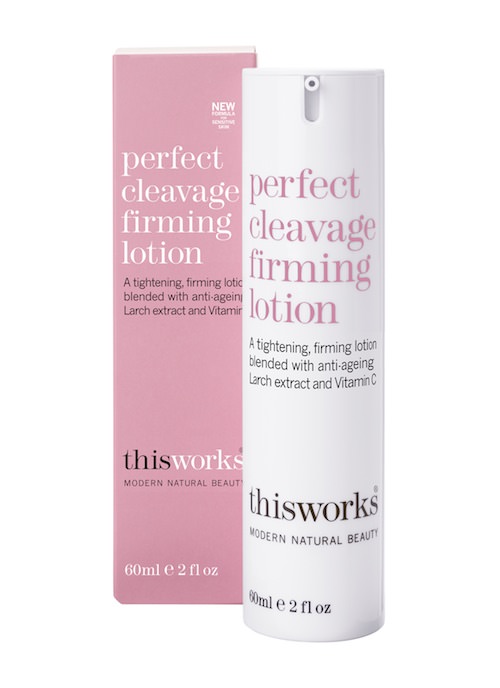“My eyes are up here”: What’s behind men’s obsession with breasts?
It’s no secret that the mere mention of breasts or boobies usually raises a snicker and claims the undivided attention of most heterosexual men.
In fact, even in today’s supposedly equal society, men still find it appropriate to criticise, drool over, laugh at or even openly fondle a woman’s bust (witness this unbelievable YouTube video of a German TV host for a case in point – his co-host’s reaction is spot on). So why the obsession with the womanly chest?
Other than to feed our babies, it remains unknown exactly why the females of our species have such pronounced, fatty breasts regardless of pregnancy or nursing status when all other mammals (including the apes to whom we’re so closely related) have flat chests. In our article Why do women have breasts? we examine various theories ranging from Darwin’s ‘buttock mimicking’ concept to social signalling and ‘hands-free’ transport, and reasons relating to deception and provisioning (visual ‘trickery’, if you like, to convince our purportedly dumb menfolk to look after us in times of need).
Breasts are so caught up in our thinking with symbols of sexuality, fertility, maturity and nourishment, that the actual reason behind their existence is no longer important. Just as we know that sex sells, so an ample bosom can reliably attract the eye of a red-blooded male. Nowadays the prevalence of internet pornography and the easy availability of such out-dated chauvinism as The Sun’s Page 3 has a lot to answer for, not just in terms of female attitude to body image but also when it comes down to what makes a grown man gawp. Even the natural process of breastfeeding can sometimes provoke such a strong reaction and stigma as to force an innocent mother to leave a public place on the grounds of ‘indecent exposure’. Frustratingly, rather than evolving, in many ways society seems to be going backwards!
The attitude towards the bust certainly started innocently enough as it was viewed as nothing more than it actually was: two biological appendages designed to nourish newborns. Breasts were celebrated as signs of fertility and early images of women and deities were depicted with voluptuous figures so that they could nurture their young / followers.
Bare-chested women are still commonplace today in many indigenous tribes and breasts are not sexualised in their cultures. Similarly, the Minoan women of ancient Crete wore robes left open to the navel, allowing breasts to remain exposed, and the sexes are believed to have been treated equally. Western women wore shapeless outfits until the Middle Ages when the invention of the corset gave the female form an exaggerated hour-glass shape. With that came a deep cleavage and a heaving bosom, but rather than being overtly sexual in nature, it was simply considered the norm and a low neckline was perfectly respectable rather than risqué.
Breasts were then hidden away, along with everything else, during the Victorian period and the fashion focus transferred to the derriere with enormous bustles. Of course we always want what we can’t have, so when women were prudishly covered from head to toe, the mere flash of an ankle was seen as saucy. Likewise, Islamic women who wear a burqa can elicit a similar reaction by adjusting their veil and briefly exposing a lock of hair.
As necklines lowered and hemlines rose following the Victorian era, so women exposed more flesh, but breasts still weren’t a big deal. In fact, in stark contrast to the curvaceous corseted figures before them, the liberated post-First World War generation celebrated the flat-chested svelte look of the flappers. The first minimiser bras were created as women sought to reduce the protrusion of their breasts, choosing to flash more of their legs instead.
However, in the 1940s fashion changed again and the bullet bra drew attention to torpedo-like boobs. During the Second World War, pin-up girls like Betty Grable, Jane Russell and Rita Hayworth gave the troops something to take their mind off their unhappy situation. American men, away fighting a war the other side of the world, lusted after the images which reminded them of home. These beauties were deemed to be ‘doing their part’ for the war when they adopted scantily-clad cheeky poses, but undoubtedly kick-started the modern male fascination with breasts. Officials turned a blind eye to the near-naked women painted on the nose of military aircraft to boost morale, and this graffiti symbolised how women were fast-becoming little more than sex objects.
The 1960s predictably saw a backlash – fashion reverted to the androgynous mod look of Twiggy and the feminist protest took on a renewed fervour – but nothing could stop the runaway train that was Playboy. Hugh Heffner started the magazine in 1953 with a nude centrefold of Marilyn Monroe and although it printed short stories by notable novelists, interviews with prominent figures and satirical cartoons, it became best known for the naked ladies. Playboy’s circulation reached a peak in the early 1970s and it is no coincidence that the aforementioned topless Page 3 girls were first seen in the British tabloid The Sun in November 1970.
Aside from the controversy that has surrounded these glamour models throughout the decades, the legacy of these lads’ mags is the modern fixation on breasts as a sign of sexuality, where bigger is better. In the 1980s and 1990s breast enlargements were sought after and Western women began to adopt a uniform Barbie-doll look with pneumatic boobs. While the current trend is still towards larger breasts, natural is thankfully beginning to be celebrated once more.
Latest Cream Review
Browse Categories
Most popular
Dr. Organic Moroccan Argan Oil Breast Firming Cream Review
Dr. Ceuticals Bust Boost Review
UK beaches uncovered: The topless top five
Palmer’s Cocoa Butter Bust Cream Review
The politics of breasts: Know your rights
Strapless, backless or plunging – bra solutions for every dress dilemma
Nutrition and lifestyle for breast cancer prevention


